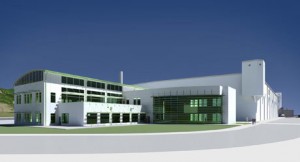
The proposed Uranium Processing Facility at the Y-12 National Security Complex. (Image courtesy of B&W Y-12)
The following is an edited version of a question-and-answer session with John Eschenberg, federal project director for the proposed Uranium Processing Facility at the Y-12 National Security Complex. Federal officials said last fall that the UPF could be larger than originally planned to make sure all the building’s equipment fits inside.
Q: What is the status of the UPF redesign?
A: UPF is currently at 66 percent of design completion. Once 90 percent design completion is achieved, we will submit a Critical Decision-2 (CD-2) package to headquarters for approval that will contain the complete cost and schedule baseline for UPF. This process, which involves both an independent cost estimate and an external independent review, will likely take several weeks to complete.
The cost range for UPF is unchanged: $4.2 billion-$6.5 billion.
National Nuclear Security Administration project staff members, with the assistance of independent industry experts, evaluated the additional engineering efforts required to resolve UPF’s space challenge, and as a result, they are proceeding with finalizing the design.
Q: How does the progress on the current design compare to the progress before the changes?
A: The UPF design is at 66 percent. It was at 75 percent before the design changes.
Q: When will the design be at 90 percent?
A: UPF is currently reworking the design cost and schedule plan submitted to NNSA to address some additional cost and schedule elements requested by NNSA. Following the re-submittal of the total project design cost and schedule plan, the project will be better prepared to determine when 90 percent design completion will be achieved.
Q: When will site readiness work start?
A: NNSA is expected to approve the UPF project’s site readiness Critical Decision package soon.  With this approval, the UPF project team will have the authorization to issue awards and begin work on site. Initial awards will be issued by plant contractor B&W Y-12 for electrical demolition and establishing a wet spoils area for unusable soil, followed by a contract award by the U.S. Army Corps of Engineers for the extension of Bear Creek Road and associated potable water lines.
Plans call for starting the site readiness work this winter. This will include preliminary work to relocate some of the existing utilities and Bear Creek Road.
Q: How many critical decisions (CDs) are left before the “big CD-2 package?†What is the number of the site readiness critical decision, and what CD comes after that?
A: The U.S. Department of Energy uses critical decisions to authorize proceeding to different phases of a project. The next CDs on UPF will establish the formal commitment on cost and schedule (CD-2), and allow the construction activities to begin (CD-3).
Furthermore, NNSA has subdivided the initial work at the Y-12 site into manageable scopes of work to allow for the maximum flexibility in contracting for that work. Each of these sub-projects have their own CDs (CD-2 and 3) before construction starts. There are three sub-projects (site readiness, site preparation, and the west end protected area reduction (WEPAR)) that should be accomplished before the CD-2 for the entire UPF project is finalized.
Site readiness will be the next CD approval on UPF.
***
The 350,000-square-foot UPF would replace four old buildings at Y-12, part of a years-long effort to update the 811-acre site, consolidate operations, and cut the plant’s high-security footprint from 150 acres to 15. Y-12 was built to enrich uranium during World War II as part of the top-secret Manhattan Project. The UPF would be the single largest post-war investment by the government in Tennessee.
This Q&A was conducted via e-mail with the help of Bridget Correll Waller, UPF strategic communications manager.
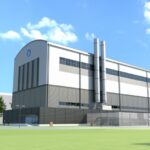

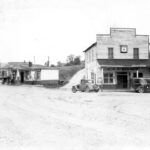
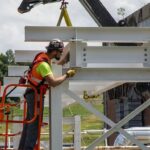
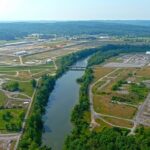
Leave a Reply